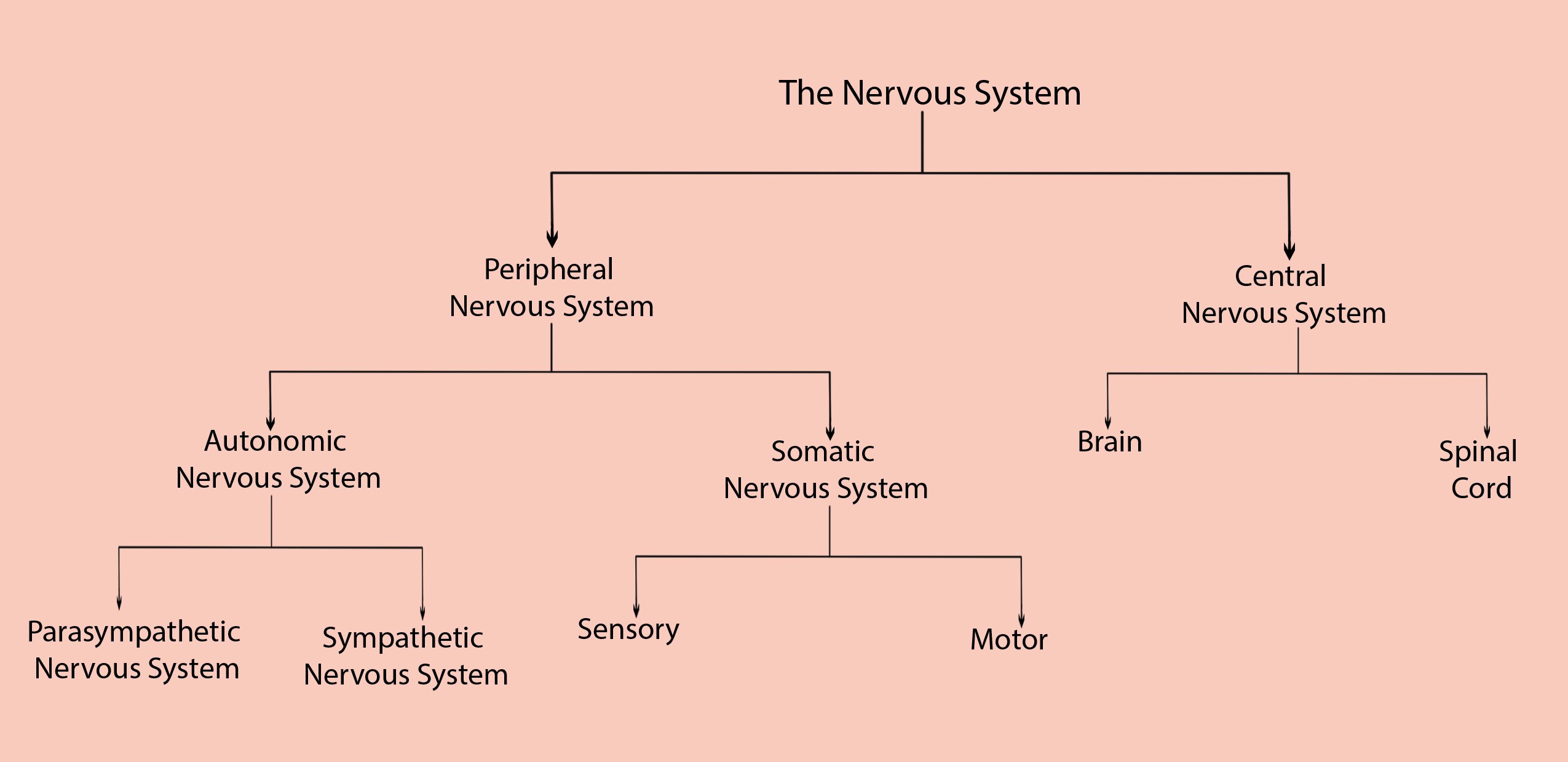AUTONOMIC NERVOUS SYSTEM
ORGANIZATION OF THE NERVOUS SYSTEM
INTRODUCTION
The weekend you've been anticipating for months is finally here-the big hiking trip with your pals in Grand Teton National Park. Thirty minutes into the hike you are confronted by a giant, grizzly mama bear and her cubs. Almost instantly your pupils dilate, your heart begins racing, the hair on the back of your neck stands up, and you feel a surge of energy as your adrenaline rises and you high tail it in the opposite direction. Your body's reactions to the bear can be summed up as a "fright, flight, or fight" reaction elicited by your central nervous system in response to incoming sensory information from the environment (i.e. seeing the bear, hearing the bear, and maybe even smelling the bear). During this response, your nervous system also slows down organs of digestion, urination, and defecation, so that all available energy may be used for running away. The actions on your heart, lungs, pupils, digestive system, and urinary system have occurred without your conscious awareness and are controlled involuntarily by the autonomic nervous system (ANS).
Organization of the Nervous System
The human body is composed of one nervous system that can be subdivided into a central nervous system (CNS) and a peripheral nervous system (PNS) (see figure below). The brain and spinal cord make up the CNS, while the PNS is made up of any nervous tissue outside the brain and spinal cord, including 12 pairs of cranial nerves, 31 pairs of spinal nerves, and peripheral sensory receptors. The PNS can be further subdivided into the ANS and the somatic nervous system depending on which type of muscle it innervates and whether or not it is voluntarily controlled.

Image by BYU-I student, 2013
The ANS can be subdivided into sympathetic and parasympathetic nervous systems. It is the sympathetic branch of the ANS that is responsible for the "fright, flight, or fight" response elicited by the encounter with the bear. Another example of a sympathetic response that might be a little closer to home would be your body's reaction after being jilted by your fiancé at the alter. You can imagine that your heart rate would increase, you might start to hyperventilate, and you definitely would have no desire to eat. A sympathetic response can also occur during illness or physical trauma, from anxiety, or pretty much any stressful situation. Such a response is characterized by increased heart rate and blood pressure, goosebumps, pupil (pupil dilation=mydriasis), bronchiole dilation, and increased blood flow to cardiac and skeletal muscles.
The parasympathetic division on the other hand, is responsible for energy conserving ("rest and digest") activities, including decreased heart rate, blood pressure, and respiration; constriction of the pupil (miosis); increased secretions and peristalsis of the digestive tract; and increased urination. The acronym SLUD (Salivation, Lacrimation Urination, and Defecation) may be useful to remember some of the responses caused by the parasympathetic division in certain organs. Other than some sweat and salivary glands, most secretions of the body increase when the parasympathetic nervous system is activated.
The ANS innervates visceral organs-organs which are unconsciously controlled by the brain. Visceral organs contain either smooth or cardiac muscle; respective examples include the intestines and the heart. Interestingly, if a visceral organ is removed from the body and placed in an oxygenated Ringer's solution, it will continue to undergo peristalsis (wave-like smooth muscle contractions of the gastrointestinal tract) or beat without even being connected to the ANS. This is called auto rhythmicity. Why then, do you ask, is the ANS even necessary for these organs to function? The answer is, it is not. But, the ANS is necessary to regulate the activity of these organs, essentially causing them to speed up or slow down in order to maintain homeostatic conditions in the body.
Usually, each visceral organ is innervated by nerves from both sympathetic and parasympathetic divisions, and effects of these divisions are most often in opposition to one another. This type of "wiring" is called dual autonomic innervation. The heart is a good example of this. It is innervated by fibers from both parasympathetic and sympathetic divisions that oppose one another. Increasing parasympathetic stimulation to the heart will cause decreased heart rate, while increasing sympathetic activity will increase heart rate and force of contraction.
**You may use the buttons below to go to the next or previous reading in this Module**

